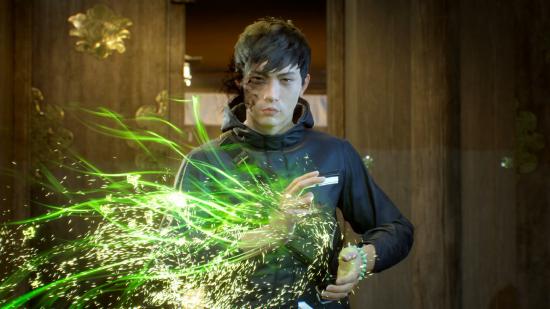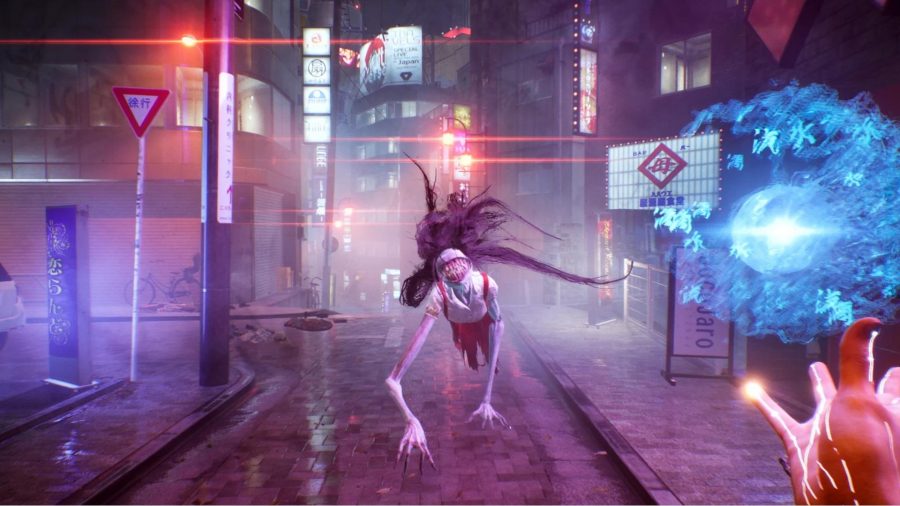It has been hard to predict much about Ghostwire Tokyo, despite its multitude of trailers since the 2019 announcement, but after getting a pre-release glimpse of the opening of the game, and seeing last week’s gameplay showcase, it is clear this is not like any game Tango Gameworks has made before.
Dropping a lot of the survival horror influence from Shinji Mikami’s previous oversight at Tango Gameworks and the methodical gameplay of The Evil Within series, Ghostwire Tokyo is built with combat, action, and style at the forefront. And from what I could gather from my hands-off preview, it looks like a kinetic adventure that has a lot of potential to shine, especially on PS5 with the DualSense.
With a mixture of finger guns, a mythical bow, and neon orange wires that literally pull the cores of ghosts out from their deformed bodies, Ghostwire’s combat looks unique and incredibly inspired thanks to the gorgeous visual effects that enhance it.
And, with ranged combat on offer with area-of-effect Talismans and the trusty bow, Ghostwire Tokyo has two very unique aspects to up its sleeve: combat and its style. However, despite being enticing, Ghostwire Tokyo could be hiding a fairly formulaic open-world behind its candy-colored Tokyo street signs and unsettling creature designs.
Seeing the opening of the game and being introduced to the core loop of Ghostwire Tokyo left me a little bit underwhelmed as all you seem to do is just clear out areas of the city and free spirits by eliminating ghosts. There are quests from the looks of it, but when a UI element popped up after saving a few souls that said there were more than 240,000 spirits to free, I realised that this might be all Ghostwire Tokyo has to offer.
I am yet to be convinced that those quests will extend beyond objectives that tell you to kill ghosts and free spirits. And, the one side activity we have seen, which has you clearing an area of enemies and cleansing a Torii Gate doesn’t suggest that we will see a lot of variety in Ghostwire Tokyo’s core loop.
In an interview following last week’s gameplay showcase, the team said the premise of the game is to “have fun and feel good”. From what I could see, the game’s combat seemed to be able to facilitate that, but whether it can sustain itself for the duration remains to be seen.

With not very much else going on in the world and a main story that seems rather generic, Ghostwire Tokyo’s combat is going to have to do a lot of the heavy lifting, with some support by the adrenaline-pumping visual effects. Admittedly, there may be more waiting later in the game that we are yet to see, but neither the media presentation I attended nor the gameplay showcase seemed to suggest that this could be the case.
While I am excited to play Ghostwire Tokyo, purely to see how Tango will replicate ripping the core out of a ghost on the Dualsense, I do have some reservations as we approach the Ghostwire Tokyo release date, which is just a few weeks away.

